Substrate
Soil Improvers (Loam & Humus)
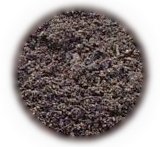
Loam
Loam is a fantastic, crumbly substrate. The stuff I buy is already sterilised and screened and comes in a sealed bag so it's sure to be free of pests. It is for acid-hating plants and it's alkalinity is likely to be perfect for snails as it will not damage shells and it may provide calcium. There are different loams, look for one with a low concentration of sand. It should feel crumbly and light. It retains moisture well but still drains and contains an abundance of natural nutrition for any alkaline-loving plants you may consider to plant.
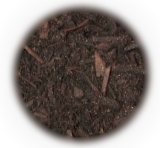
Humus
Generally "Humus" is often used to mean mature compost or natural compost extracted from a forest or other spontaneous source to improve soil. It tends to contain various organic matter including bits of bark, twigs, leaf matter and soil. It is considered and improver because it contains various nutrients, helps retain moisture and encourages good soil structure. As far as I know it is likely to be mildly acidic.
Mixed Together
I've only seen a sample of humus so far, but I intend to use a mixture of both loam and humus, with the greater part being loam. I think it will provide good quality soil, that is neutral or slightly alkaline, holds moisture well but drains rather than becomes swampy and isn't too gritty. It should be good quality soil for growing plants in your tanks where artifical fertilisation is risky and provide food and sustenance for other tank life such as worms and woodlice.
Having used loam and having seen a sample of humus, I'd definitely consider a mix of this to be the best substrate as it fulfils most, if not all, of the requirements we are likely to have. If I had to choose one or the other, it would definitely be loam.
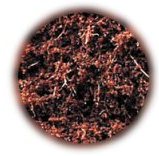
Coir
Good Points: Good for burrowing and laying eggs. It is relatively clean to work with. It holds moisture well. Easy to re-use. Not acidic. Eco-friendly. Reasonably cheap. Buying dehydrated, compressed blocks means you are guaranteed a sterile, pest-free substrate.
Bad Points: Slightly more gritty than peat. Harbours mites and other pests well.
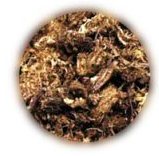
Peat
Peat is a good substrate for snails.
Good Points: Good for burrowing and laying eggs. It is relatively clean to work with as it has a rough texture, with some large pieces. It holds moisture well. Easy to re-use. Cheap.
Bad Points: Slightly acidic which can cause some scarring of the snail shells (they don't seem to mind). Harbours mites and other pests well. Not eco-friendly because it is a natural resource that is running out. However, most peat sold in garden centres is more eco-friendly and taken from managed areas. All the same, if you get some, aim to re-use it as much as possible.
Note: If possible, avoid Sedge Peat as this contains salt and could possibly injure your snails. Sedge peat is usually reddish-brown rather than Sphagnum peat's light-tan to medium-brown colour.
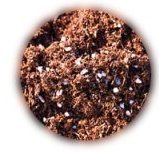
Potting Soil
Make sure you choose a type with no added pesticide or fertliser. Same qualities as peat, slightly dirtier to work with because the particles are smaller and more regular. Cheap.
Good Points: Good for burrowing and laying eggs. Holds moisture well. Eco-friendly. Easy to re-use. Not acidic.
Bad Points: Slightly more dirty than peat to work with, harbours mites and other pests well.
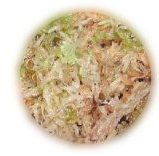
Sphagnum Moss
A plant that is like a natural sponge that can hold 20 times its own weight in water.
Good points: Reduces pests, holds moisture extremely well. Not that cheap for what you get. Easy to re-use by rinsing. In my experience a lot of snails prefer to burrow under it or tunnel into when used in conjuction with other substrates.
Bad Points: It holds water very well, but tends to dry out quicker than peat in a warm tank. Now I have used it, I wouldn't be without it but only in conjuction with something else. There have been reports that moss exacerbates the problem of mites.
Personally I only use it from time to time and only the odd clump on top or mixed in with other substrate.
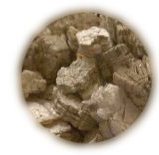
Vermiculite
A natural mineral that holds water well, but doesn't go soggy.
Good Points: Snails can burrow in it and lay eggs. It is very clean to work with. It holds moisture well. Easy to wash and re-use. Not acidic. Eco-friendly. Generally sterile, it can breathe and as such is more resistant to mold, fungus and pests.
Bad Points: Not ideal for burrowing, snails would prefer a more composty texture. Very expensive for what you get.
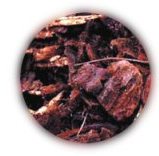
Bark
Good points: Reduces pests, holds moisture well. Cheap.
Bad Points: Not ideal for burrowing, snails would prefer a more composty texture. Although it can hold water it's hard to strike a balance. The water tends to runs off it and stagnate at the bottom of the tank. Bottom layers becomes slimy. Prone to mold and fungus. Not easy to clean and re-use.
Personally, I would only ever use a handful, as a soil improver, mixed in with something else.
Conclusion
Most people use Peat, Potting Soil or Coir. Some people use some of the others either mixed in with the main substrate or in the case of sphagnum moss, placed in the tank.
Unsuitable types
Sand, brittle things like rocks and pebbles, soils with added fertiliser or pesticides and generally things they can't dig in.
Re-use
To save a lot of money, and in some cases the environment it's a good idea to re-use your substrate whenever possible.
For more information on cleaning/re-using your substrate click here.
Pests / Disease
From time to time you may experience pests in your tank. These can be mites or flies. Some are harmful to the snails (especially juveniles) but in most cases they are harmless. However, they are unpleasant and unsightly and need to be dealt with.
Common sense is required here. Obviously, damp conditions with food on offer will attract both fruit and phorid flies. These flies can be killed in a number of ways but if the infestation is bad:
- Sterilise the soil or throw it away.
- Disinfect/Bleach the tank and all the ornaments and RINSE thoroughly. (Caution: failure to rinse completely thoroughly may end up killing the snails).
The best way to deal with these pests is to be vigilant in checking and diligent at cleaning:
- Clean the tank and ornaments regularly.
- Check for pests in the soil regularly and deal with the problem at the first sign.
- Don't leave food in the tank for longer than needed, replace with fresh food as often as possible (once a day is ideal).
- Place the food in a plastic dish to stop the food touching the soil if you don't have a live-planted, custodian-dwelling tank.
- Bathe your snails in room temperature water regularly. Inspect for mites.
- If you suspect any problem isolate the problematic snail(s) while you try and figure out what the problem is.
Tips
- Sterilise the soil or throw it away.
- If you find a snail that does have mites, throwing the soil away won't necessarily kill them off, because they can live on the snail's body. If you catch it early it may be possible to isolate the snail and give it frequent baths to reduce the problem.
- It is wise to keep African snails and native snails apart. Pests/Disease from native snails could harm African ones and vice versa.
- It is worth observing any new snails you get for signs of disease and pests, especially if they are wild-caught or rescued from bad conditions. If you are worried they may be problematic keep them separate from any other snails you have until you have had chance to observe them and check for illness/pests.
- If you are keeping very young snails or eggs in the same tank as an pest-ridden snail it may be wise to separate them. It seems very young snails are much more susceptible to the pests and may be killed.
- If you suspect any problem isolate the problematic snail(s) while you try and figure out what the problem is.
Generally, compost does harbour other life than your snails, some are benficial and most are harmless. In most cases they are nothing to worry about and won't bother the snails. They are just unsightly.
For more specific information and advice see our problems section.
For information on cleaning both your snails and your equipment click here.
